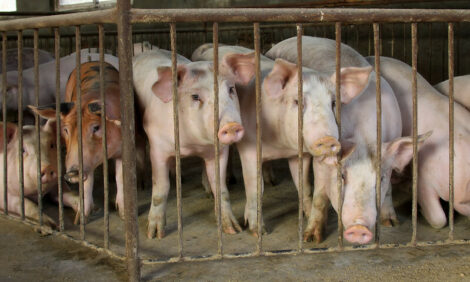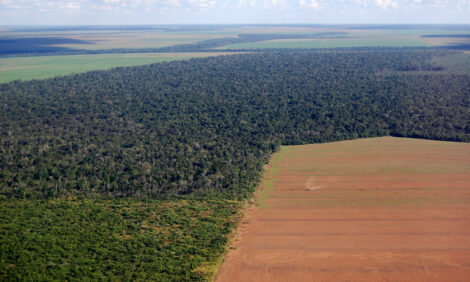



Pig Market Showing Signs of Traditional Seasonal Changes
UK - The signs of a seasonal change in the pig market have become apparent in recent weeks, according to the latest analysis by Quality Meat Scotland (QMS).After falling by 7p/kg in January, the weekly declines in the GB Standard Producer Price (SPP) began to slow in February, sliding by around 2.5p during the month.
After a marginal decline in the week ending March 5, the SPP then gained ground for the first time in seventeen weeks, edging up by 0.25p/kg to reach a four-week high of 112.37p/kg dwt. Nevertheless, observed Iain Macdonald, Senior Economics Analyst with QMS, this was still down by 15 per cent year-on-year.
“In the first quarter of 2016, farmgate pig prices followed their traditional seasonal pattern, sliding as supply increased in January, both from increased weekly slaughterings and higher carcase weights,” said Mr Macdonald.
“Early this year, record carcase weights generated additional downward pressure on the market as mild December weather boosted growth rates, leading to extra supplies of pigmeat.
“As slaughter numbers and carcase weights eased back in February, the price declines slowed and then the market showed signs of stabilising into March, with the weekly kill and carcase weights continuing to edge lower.”
Looking at the demand side, January is traditionally weak as household budgets are tightened after the festive period, observed Mr Macdonald. Sales then tend to recover gradually as Easter approaches.
Industry feedback suggests that this year has been no exception to this historic trend, and the recent lift in the SPP came two weeks before Easter. A further signal of a better balance between supply and demand, said Mr Macdonald, is that spot prices have reportedly firmed, narrowing the gap with contract prices.
“In addition to seasonal changes in supply and demand, the market is likely to have been affected by an improvement in the relative competitiveness of UK pigmeat against product from the rest of the EU.
“With farmgate prices stabilising on the continent, lower UK prices have seen the gap between the UK and EU average narrow from 30-40 per cent in December to 12-15 per cent in late February/early March,” he stated.
“A lift in the value of the euro, due to weaker UK economic growth and the uncertainty caused by the upcoming referendum on the UK’s future in the EU, has also had an impact.”
As a consequence, UK pigmeat has become more competitive in price sensitive markets both at home and on the continent, and currency movements are likely to have made potential margins on exports look more attractive to UK processors. UK trade data for January indicates that imports fell whereas exports increased strongly compared with a year earlier.
“A further positive for producers, who have seen margins squeezed heavily, is that global prospects for arable crop production continue to look bright and this has helped maintain the downward pressure on feed costs. Indeed, the price of feed grains has been running 10-15 per cent lower than last year, while soyameal is nearly 25 per cent cheaper to buy than in mid-March 2015,” said Mr Macdonald.
However, the fact is that farmgate prices remain significantly lower than last year, with both the average price per kilo and per carcase down by 15 per cent year-on-year.
Although this will have been offset by lower feed costs and rising productivity, in terms of the number of pigs per sow, for many producers it will have been a challenge to break even.
With weekly slaughterings in February in the UK level running 4 per cent ahead of last year and the December census pointing to an increase in the female breeding herd in both England (by 1 per cent) and Scotland (by 12 per cent), scope for any significant recovery in producer prices looks limited.






